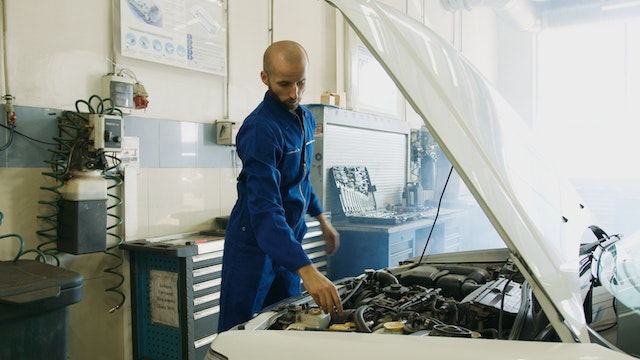
Low-mileage drivers have different service needs for their cars than average drivers do. Vehicles that are driven less often than typical cars also have unique needs than what are usually outlined in vehicle owner manuals!
Are You Driving Less than Usual?
Owner manuals are written relative to mileage milestones that pertain to the average car. When low-mileage cars don’t reach those points, they also don’t meet service requirements.
As such, low-mileage car owners are left wondering how to maintain their cars, especially considering that only some parts succumb to only wear and tear damage; others are impacted by time.
What Does It Mean to Have a Low-Mileage Car?
There isn’t a single, conclusive definition as to what classifies a car as a “low-mileage” vehicle. Generally, a car with fewer than 30,000 miles is classified as such, but the low-mileage “umbrella” can also include vehicles that simply have fewer-than-average miles on them for their age.
Low-mileage cars are also usually in better condition than cars with higher mileage, which often makes them attractive to buyers.
How to Maintain a Car that Is Not Driven Often
A seldom-driven car still needs regular work, from a tire check to an oil change. Low need pressure to prevent flat spots
- Park in a cool, dry place if you can’t get it to a garage or carport
- mileage doesn’t mean low attention, after all!
Good low-mileage car maintenance begins with proper storage, which is important given that low-mileage cars spend so much more time sitting around compared to standard ones. The difference you can make with the way you store your car can be much bigger than you may think.
To care for your car while it’s tucked away, follow these tips:
- Keep it covered to protect it from dust, dirt, and the elements
- Inflate its tires to the recommeStart your car and let it run for a few minutes every few weeks
- Consider adding a fuel stabilizer to you gas tank
Disconnect the battery to prevent it from draining, and put antifreeze in your radiator to keep the engine from freezing if the car is in a cold climate. If you’re instead storing your car in a hot climate, consider waxing your car to protect its paint.
Taking Care of Your Less-Driven Vehicle
Even when a car has been parked for a while, it can still be threatened by all kinds of things. Doing a quick check on a monthly basis can, therefore, ensure that the car remains in good condition.
Treat Your Car to Professional Maintenance Twice a Year
Regular servicing performed by a professional mechanic can help catch potential problems early before they have a chance to cause any major damage. In addition, these twice-yearly checks will help extend your vehicle's lifespan and improve its performance while being far less expensive than paying for repairs that became necessary due to neglect!
Keep an Eye on the Oil Levels
You should regularly check your car’s oil level, as well as its tire pressure, battery, and fluid levels, which include brakes, transmission, and engine levels. It’s all part of how to maintain a car that is not driven much.
Check for any chewed wires that may have fallen victim to critters as the car sat, and look for stains, tears, or other damage to the interior and chips, dents, or scratches on the exterior.
Balance Those Tires Each Year
Don’t underestimate the importance of balancing your tires each year, as even low-mileage tires can become unbalanced, which leads to vibration and uneven wear that can make every ride uncomfortable and lead to premature replacement. They can also negatively impact the fuel efficiency of your car.
Keep the Engine Spick and Span
An engine must be pampered, even in vehicles that aren’t driven very often. You should start your car and drive it for about 15 miles each month to keep the engine running smoothly and the fluids flowing properly. In addition to topping off fluid levels, you’ll also want to:
- Change the air filter regularly
- Keep the engine bay clean and free of debris
- Change the oil filter according to the manufacturer's recommendations
If you’re in an area that accumulates a lot of dust and dirt, you should have the engine cleaned even more often. If your car has a turbocharger, it can be damaged by dust and debris, so keeping the engine clean becomes even more vital!
Handy Oil Change Tips for Low-Mileage Cars
You may not think your car needs an oil change. Low-mileage cars need them almost as often as average ones, though! The oil is the key to keeping the most important parts of your car in good working order.
You should check the oil level at least once monthly and change the oil in a low-mileage car at least twice per year or every 5,000 to 7,500 miles, whichever comes first, given that oil degrades over time and can still become contaminated with debris.
Caring for a Car That’s Not Hitting the Road Much
Find a mechanic you trust who has experience working on your car’s make and model and always keep track of the work and maintenance you have done. Make sure to inspect your vehicle from time to time. If you don’t neglect it, your low-mileage car can last for several decades in top shape.








